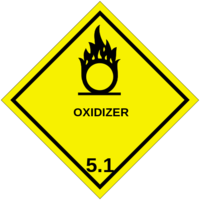-
LoJack technology helps in two rescue efforts
Two services from LoJack allow police to rescue two young kids in a stolen car, and locate an 82-year olf man who wondered away from home
-
-
Hughes shows Emergency Networking Solutions ahead of hurricane season
According to the National Hurricane Center, the 2011 hurricane season’s biggest event — Hurricane Irene — caused more than $15 billion in damage and killed forty-nine people; this year, projections are mixed, as meteorologists predict fewer named storms but greater proximity to the U.S. coastline
-
-
Improving fast-moving mobile networks
Mobile ad hoc networks (MANETs) allow people in multiple, rapidly-moving vehicles to communicate with each other – a useful technology in for emergency-response situations or soldiers under fire; researchers have devised a method to improve the quality and efficiency of data transmission in these networks
-
-
Direct-mail list company adds emergency responder mailing lists
The growing attention to preparing for, coping with, and recovering from natural and man-made disasters means that more government and private funds are allocated to emergency services, and more professionals are trained and hired to perform emergency-related services; direct-mail companies have noticed this trend
-
-
Aussie emergency services industry continues to grow
Over the past five years, emergency services funding in Australia has been driven by population growth, which has led to an increase in demand for emergency services; emergency services industry will generate revenue of AUS$20.2 billion in 2011-12, an increase of 4.5 percent on the previous year
-
-
City of Seattle Fire Department improving firefighter, EMS responses
New communication system allows Seattle Fire Department to use new voice, video, and wireless by providing secure and fast switching between multiple networks
-
-
AT&T selected as TacCom prime vendor
AT&T Government Solutions has been selected as a prime vendor under the Tactical Communications Equipment and Services (TacCom) contract; the contract, administered by DHS, is a multiple award, Indefinite Delivery-Indefinite Quantity (IDIQ) contract with an overall value of $3 billion and a base contract period of two years and three, one-year options
-
-
Las Vegas first responders testing next-generation LTE broadband
Public safety officers in Las Vegas, Nevada, are on the air with a 700 MHz Band 14 LTE (Long Term Evolution) solution through a pilot program that demonstrates the potential of next-generation wireless broadband technology
-
-
Teaching robots to pick up oddly shaped objects
The use of robots in military and first response missions is growing; in some of these missions – for example, checking a suspicious object, lifting an oddly sahped IED off the floor — robots need more flexibility and dexterity than is currently available; researchers offer encouraging news on this front
-
-
LMR market to reach $16.2 billion by 2017
Next generation mobile/wireless technologies continue to suffer from coverage and reliability issues, which are key considerations for law enforcement, emergency medical services, disaster recovery, and other public safety applications; as a result, a large number of critical services continue to remain committed to narrowband analog connectivity such as a Land Mobile Radio network; this is good news for the future of the LMR market.
-
-
New micro helicopters for search and rescue missions
New micro helicopters have a diameter of about fifty centimeters, weigh only 1,500 grams; they do not rquire GPS or remote control to navigate; they are designed to maneuver in tight or even enclosed spaces, and to detect and fly around any obstacle; possible uses could include protection or rescue missions, and they are ideal for flying over disaster areas and giving a picture of the situation from the air or locating victims
-
-
Harris deploys public safety communications system in Virginia
Harris Corporation has received a $10 million contract from Pittsylvania County, Virginia, to deploy a public safety digital communications system based on P25 Phase 2 standards
-
-
1962 disaster leads to stricter hazmat transportation regulations

Federal transportation law requires all vehicles carrying hazardous materials to display information placards, diamond-shaped, color-coded signs with numbers and symbols posted at various points on the truck; the law is the result of a 1962 Connecticut accident, in which four fire fighters died because they were not aware of the hazardous material a truck, which was on fire, was carrying
-
-
Wisconsin county has a new LMR system
In Rock County, Wisconsin, firefighters have been required manually to change radio channels as they moved from North to South because of two different frequencies in the region; Raytheon is helping to combine three disparate communications systems in the country into one; the result will be more efficient – and interoperable – first response communication system
-
-
Efficiency of multi-hop wireless networks boosted
Multi-hop wireless networks can provide data access for large and unconventional spaces, but they have long faced significant limits on the amount of data they can transmit; now researchers have developed a more efficient data transmission approach that can boost the amount of data the networks can transmit by 20 to 80 percent
-
More headlines
The long view
Using Drone Swarms to Fight Forest Fires
Forest fires are becoming increasingly catastrophic across the world, accelerated by climate change. Researchers are using multiple swarms of drones to tackle natural disasters like forest fires.
